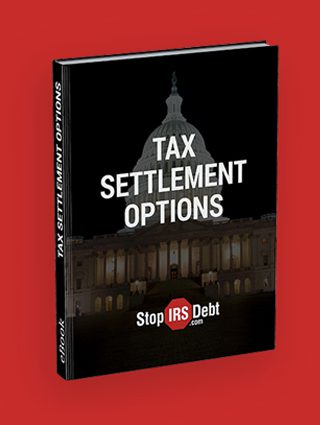- browse by category
- Audit Assistance
- Business and Taxes
- Celebrities in Tax Debt
- Cryptocurrency Taxes
- Economic News
- Foreign Banking
- Innocent Spouse
- IRS debt settlement
- IRS Headlines
- IRS Wage Garnishment
- Marriage & Divorce
- Payroll Tax
- Retirement
- Revenue Officers
- State Tax Headlines
- Stop IRS Debt
- Success Stories
- Tax and Politics
- Tax Attorney
- Tax Codes
- Tax Debt Help
- Tax Evasion
- Tax Levy
- Tax Lien
- Tax Payment Plans
- Tax Return Filing
- Tax Tips

The election has come and gone. And what a tumultuous election it was! Historic numbers of Americans (over 47 percent of eligible voters) on November 6 made their voices heard on everything from ballot measures to hotly contested senate elections. Along with dozens of high-profile senate and gubernatorial races, as well as thousands of local races, Election Day also played host to countless ballot initiatives and tax measures.
From getting rid of Daylight Savings Time to changing union rules, voters in many states weighed in on proposed laws small and large. Of course, a number of tax measures also found their way to the ballot. Although U.S. voters have approved about half of all tax measures in the last 15 years, this year, they voted ‘no’ a lot more. This may be in part because of the election’s high turnout, or even because voters tend to say “nay” when they’re unsure. One common thread: Most rejected measures were tax increases.
Now that the people have spoken, we’re here to share some of what they said. Here are five of the biggest tax measures taxpayers voted down on Election Day.
5 Tax Measures Taxpayers That Failed
1. Amendment 73: Colorado Says ‘No’ to Income Tax Brackets
Colorado is known as a relatively safe bastion for progressive policies, so it might come as a surprised that Coloradans struck down Amendment 73.
In short, the Establish Income Tax Brackets and Raise Taxes for Education Initiative would have changed Colorado’s flat 4.63% income tax rate to a bracketed system, raised taxes for folks earning over $150,000 a year, raised the corporate income tax rate, and established a new fund dedicated to public education.
Amendment 73 fell short of the 55 percent supermajority required to pass, so Colorado’s flat 4.63% rate will remain unchanged for now!
2. Proposition D: Missouri Gas Prices Sit Tight
“Gas prices are too darn high,” may be the one statement all U.S. voters can agree on, so it’s not all too surprising Missouri voters opted to strike down Prop D.
The headlining piece of this legislation would have incrementally increased the gas tax by about 50% by June 2022, from 17 cents to 27 cents, dedicating all revenue to the state highway patrol. That’s a substantial increase, even if it may have only amounted to an extra dollar or so at each fill up. The bill also would have exempted Olympic-related prizes from state taxes and created a fund for certain road projects.
Proposition D failed, only garnering just over 46% of Missourians’ votes. We can’t blame them—gas prices are too darn high!
3. Measure 25: South Dakota Quits Tax Increases Cold Turkey
State governments often look to tax increases to curb consumer habits, from soda taxes to cigarette taxes. But putting the choice in voters’ hands, like with Measure 25, can yield different results.
Known as the South Dakota Tobacco Tax Increase Initiative, this measure was set to increase the tax on cigarettes by a dollar per pack of 20 cigarettes, from $1.53 to $2.53, and wholesale tobacco products by 20 percent (35 to 55 percent).
Dedicating a portion of this new revenue to technical institutes wasn’t enough for voters. About 55 percent of them voted ‘no.’
4. Initiative 1631: Washington Leaves Carbon Untaxed
Carbon taxes are one proposed method of keeping corporations accountable for their impact on the environment. But voters in Washington weren’t prepared to make Initiative 1631 the nation’s first carbon tax.
Had it passed, the Carbon Emissions Fee Measure would have enacted a carbon emissions fee of $15 per metric ton of carbon beginning in 2020 that increased by $2 every year until the state’s greenhouse gas reduction goals were met. The revenue would have funded various environment-related programs.
Perhaps a similar carbon tax will pass in Washington another day. For now, nearly 57 percent of voters are just fine without it.
5. Amendment 5: Florida Challenges Future Tax Increases
Aside from headline-grabbing statewide races, one of the biggest outcomes from Nov. 6 was Floridians’ approval of Amendment 5—which restricts future taxes.
Amendment 5’s name is self-explanatory: The Two-Thirds Vote of Legislature to Increase Taxes or Fees Amendment. By voting ‘yes,’ the amendment would force the Florida State Legislature to require a two-thirds vote to enact any new taxes or increase current ones.
The amendment required a 60 percent supermajority to pass. It easily reached that bar with a 66 percent ‘yes’ vote—making future taxes harder to pass!
Did Tax Measures Change in Your State?
Of course, major tax measures could be found on ballots throughout the United States on Nov. 6, and many of them still did pass—even if the rate was lower than usual. If you’re ever unsure about what your state tax laws mean for you, we’re here to help.
Now that we’ve covered some of the highlights, we want to hear from you. Leave us a note in the comments. Which tax measures were on the ballot in your state? And what were the results?
Leave Comments

Top Tax
secrets revealed
Sign up for our newsletter and be the first to find out when exciting IRS news happens. Yes, exciting. We're really into taxes.


